Sophia Coppola’s Lost in Translation kept taking on new meaning as I tried to plan a recent family trip to Japan. What “moon” were we arriving and departing, hotel booking sites wanted to know. Would a small room of futons work for the four of us? Or would we get more rest in sleep pods that looked like MRI chambers?
As things go curiouser and curiouser, I asked architect Kano Hirano of No. 555 to point me in the right directions in Tokyo and Kyoto. Having written about several No. 555 projects, including Kano’s own Tokyo house, I knew she’d understand what we were looking for: places that are not only reasonably well-located and -priced but thoughtfully designed.
Architects, it turns out, make great travel agents. The many inventive suggestions Kano fired off changed our trip: thanks to her we stayed at—and adored—a hotel with loft beds, an art gallery, and the right pod hotel. Back home I still turn to Kano’s list for inspiration, which is why I felt compelled to share it. Read on, whether you’re planning a trip or just a fan of Japanese invention.
N.B. Hotels are listed here in alphabetical order by city. Go to the hotel sites for rates—and note that lodgings in Japan often charge per person rather by the room.
TOKYO
Aiaoi
Located on the sea in Kamakura—just under an hour south of Tokyo Station—this six-room Mom and Pop is for those looking for a quiet hideaway.
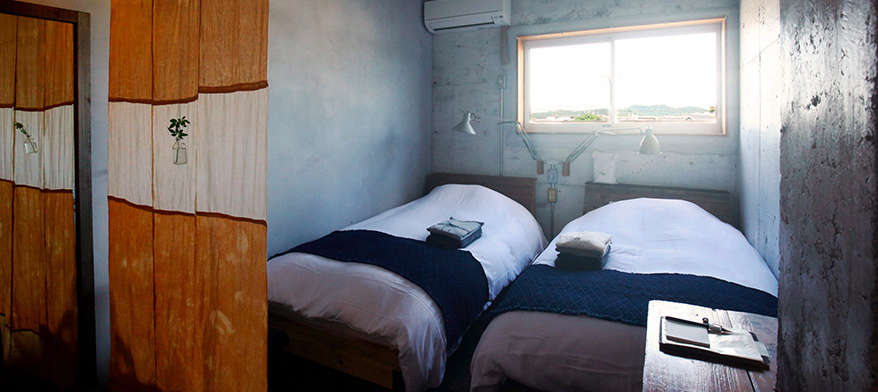 Above: The hotel is set on the third floor of a remodeled 1950s house. This room is called Asa (which happens to be my son’s name). Ask to borrow pajamas: the owners’ make their own—”a design we would like to wear every day”—and keep them on hand for guests to try.
Above: The hotel is set on the third floor of a remodeled 1950s house. This room is called Asa (which happens to be my son’s name). Ask to borrow pajamas: the owners’ make their own—”a design we would like to wear every day”—and keep them on hand for guests to try.
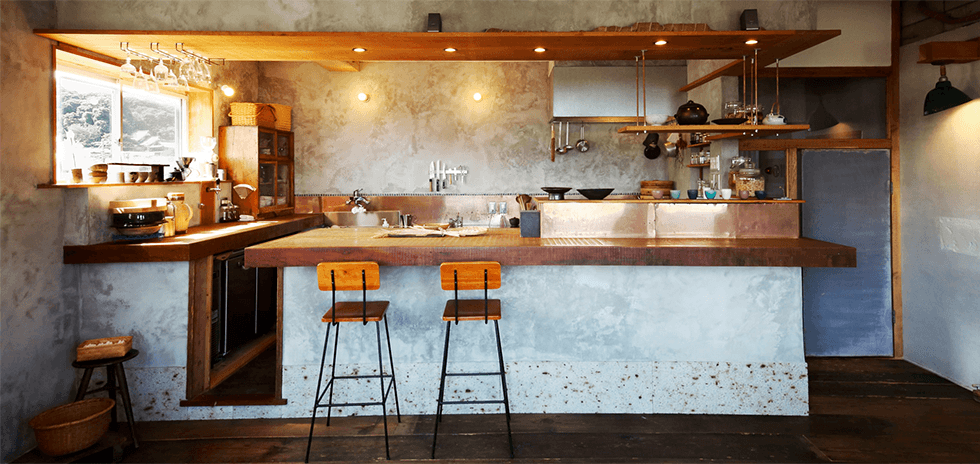 Above: Aiaoi has its own cafe where breakfast is served. It’s open to the public for dinner and specializes in the local catch: “the fishermen of Sakanoshita bring the freshest seafood in a bucket directly here.”
Above: Aiaoi has its own cafe where breakfast is served. It’s open to the public for dinner and specializes in the local catch: “the fishermen of Sakanoshita bring the freshest seafood in a bucket directly here.”
Claska
Kano describes the Claska as “an interesting mix of hotel, design showroom, gallery, and shooting space.” It’s located in upscale, untouristy Meguro and was created from a 1960s hotel—go to Hotels & Lodgings to see our feature on it from when it first opened.
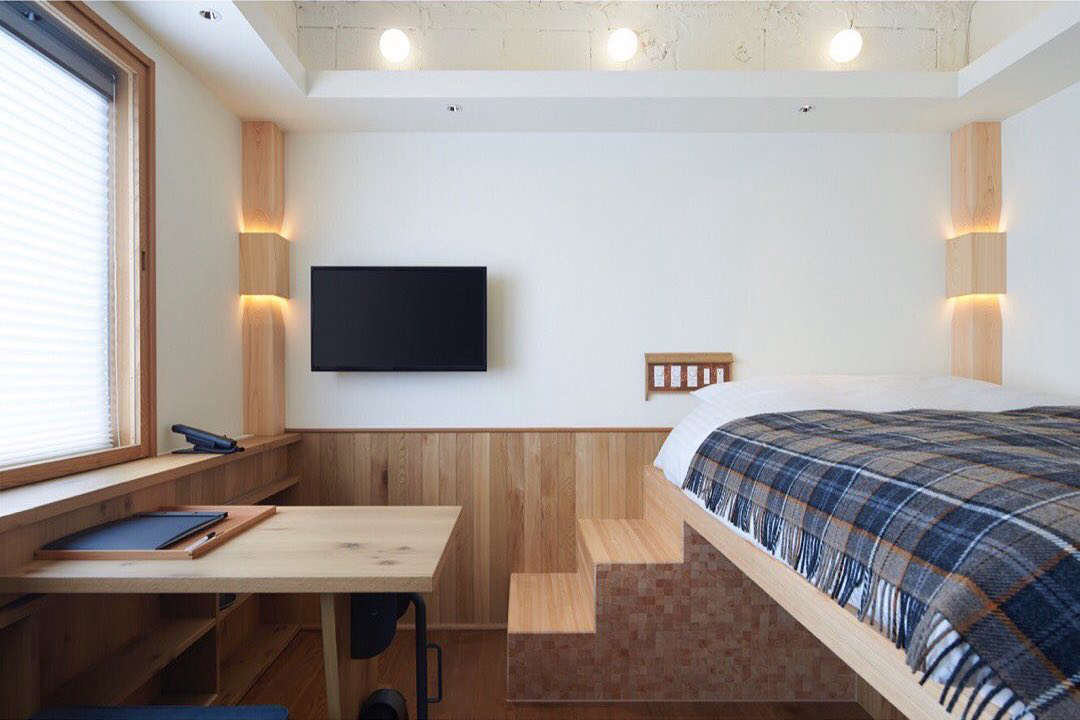 Above: Well-known architects and designers are invited to furnish the Claska’s 20 rooms, and every so often a new setup is revealed. Postalco co-founder Mike Abelson created Room 702, shown here, which is dubbed “In Praise of Shadows.”
Above: Well-known architects and designers are invited to furnish the Claska’s 20 rooms, and every so often a new setup is revealed. Postalco co-founder Mike Abelson created Room 702, shown here, which is dubbed “In Praise of Shadows.”
(We happen to be Postalco groupies: Julie, Josh, and Alexa all carry The Backpack.)
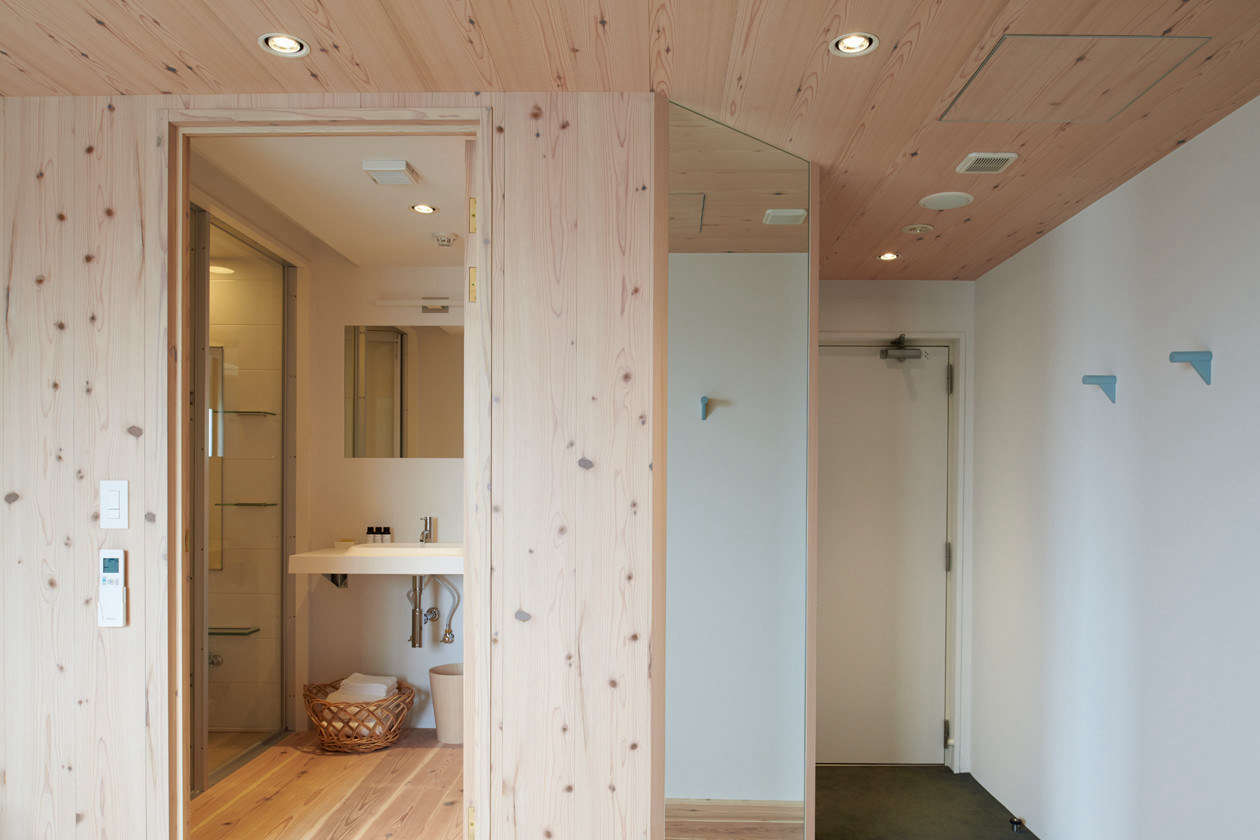 Above: Room 602, clad in cedar, is the work of designer Kaname Okajima.
Above: Room 602, clad in cedar, is the work of designer Kaname Okajima.
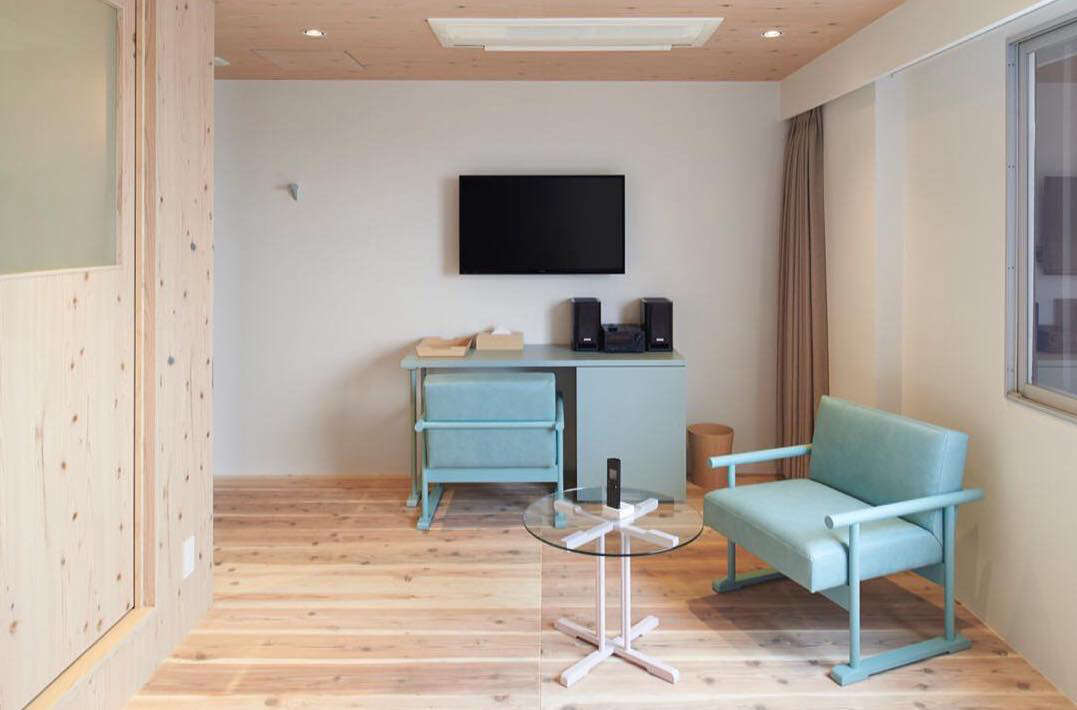 Above: Okajima’s furniture was custom made for the Claska.
Above: Okajima’s furniture was custom made for the Claska.
Muji Hotel
After coming up with simple designs for every corner of the house, it made sense for the Japanese retailer to branch into hospitality. Muji’s first hotels opened in Shenzhen and Beijing. Last summer, its third debuted in Ginza, Tokyo’s most famous shopping hub.
 Above: The quarters range in size from just big enough for a twin bed to this suite. As you would expect, Muji Hotels showcase some of the brand’s most popular designs, including the wooden tissue dispenser and electric tea kettle. The nearest Muji store? Right downstairs.
Above: The quarters range in size from just big enough for a twin bed to this suite. As you would expect, Muji Hotels showcase some of the brand’s most popular designs, including the wooden tissue dispenser and electric tea kettle. The nearest Muji store? Right downstairs.
OMO5
OMO is a small, lively chain with wall maps and walking tours dedicated to sending guests to “where the locals like to go.” Its Tokyo branch is in Otsuka, conveniently across from Otsuka Station, in a “retro-Tokyo” section of the city packed with everyday shops and ramen joints.
 Above: We stayed at the OMO5 Otsuka in rooms with lounge areas tucked below elevated beds that felt like indoor treehouses (in a good way). The designers used the side wall to create hanging storage (in lieu of closets) and shallow shelving that I hugely admired. We hope to return.
Above: We stayed at the OMO5 Otsuka in rooms with lounge areas tucked below elevated beds that felt like indoor treehouses (in a good way). The designers used the side wall to create hanging storage (in lieu of closets) and shallow shelving that I hugely admired. We hope to return.
Trunk
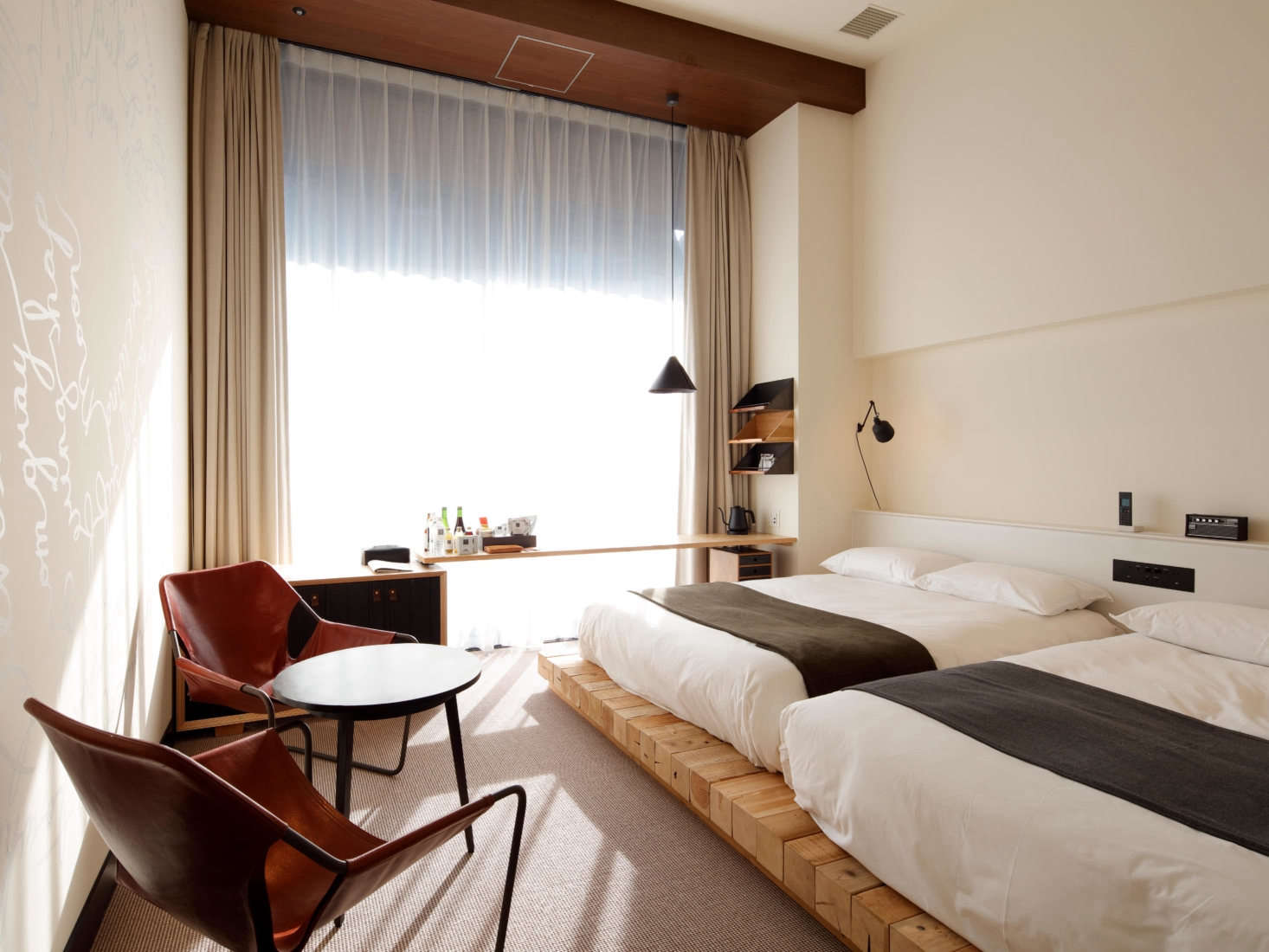 Above: “Trunk is the transmission point of a new style of social contribution called
Above: “Trunk is the transmission point of a new style of social contribution called KYOTO
A Day In Khaki
Kyoto is filled with machiya, historic wooden townhouses, that have been newly updated, and, in many cases, turned into guest rentals. One of the standouts is A Day in Khaki, which gets its name, owner Anne explains, because she and her design team are partial to shades of brown. A lovely, small shop on the A Day in Khaki site offers smocks, bedding, and minimalist leather slippers, all in the color of choice.
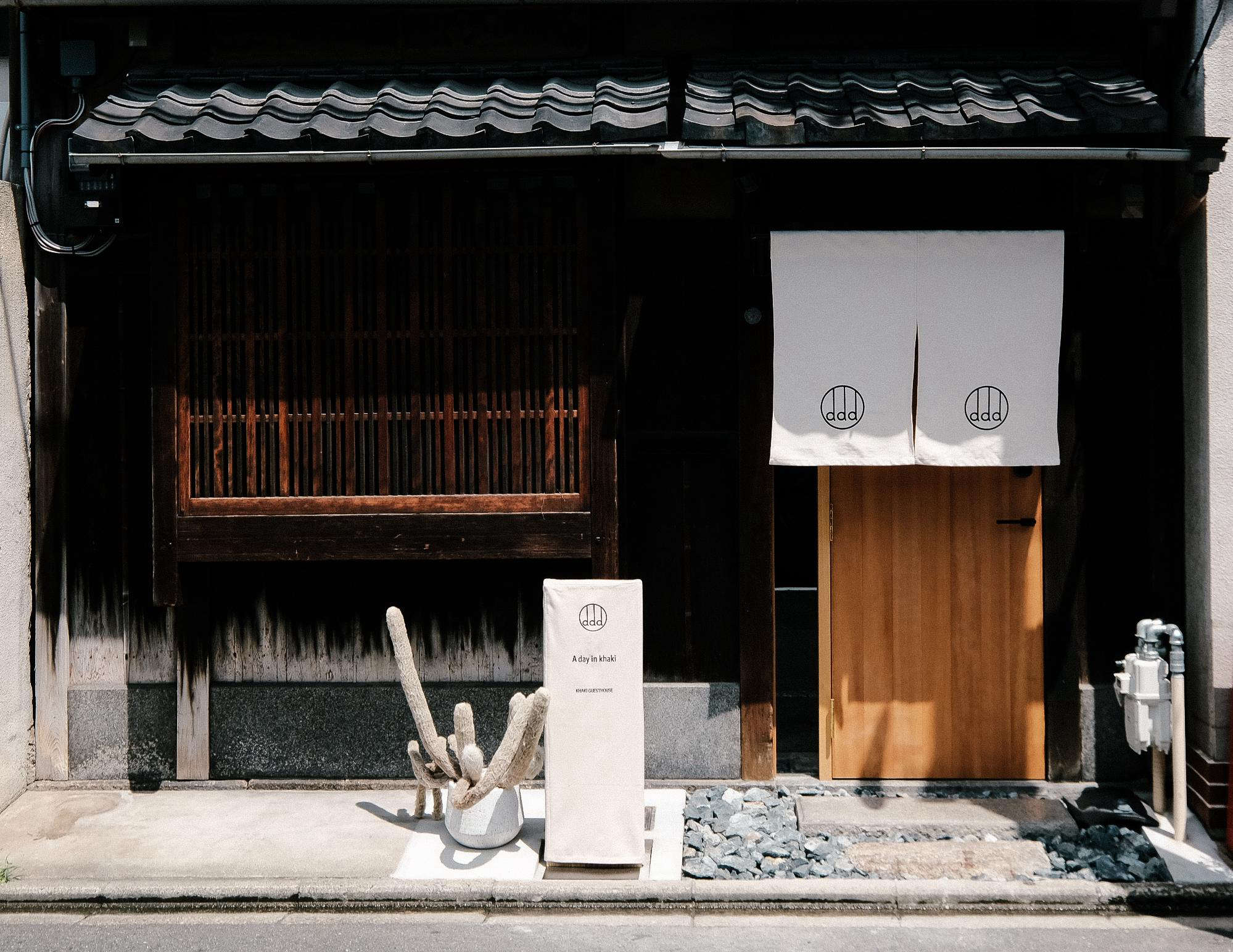 Above: Set in Kyoto’s Nakagyo Ward, minutes from Nijo Castle, the house is 120 years old, and was remodeled by architect Tada Masaharu
Above: Set in Kyoto’s Nakagyo Ward, minutes from Nijo Castle, the house is 120 years old, and was remodeled by architect Tada Masaharu
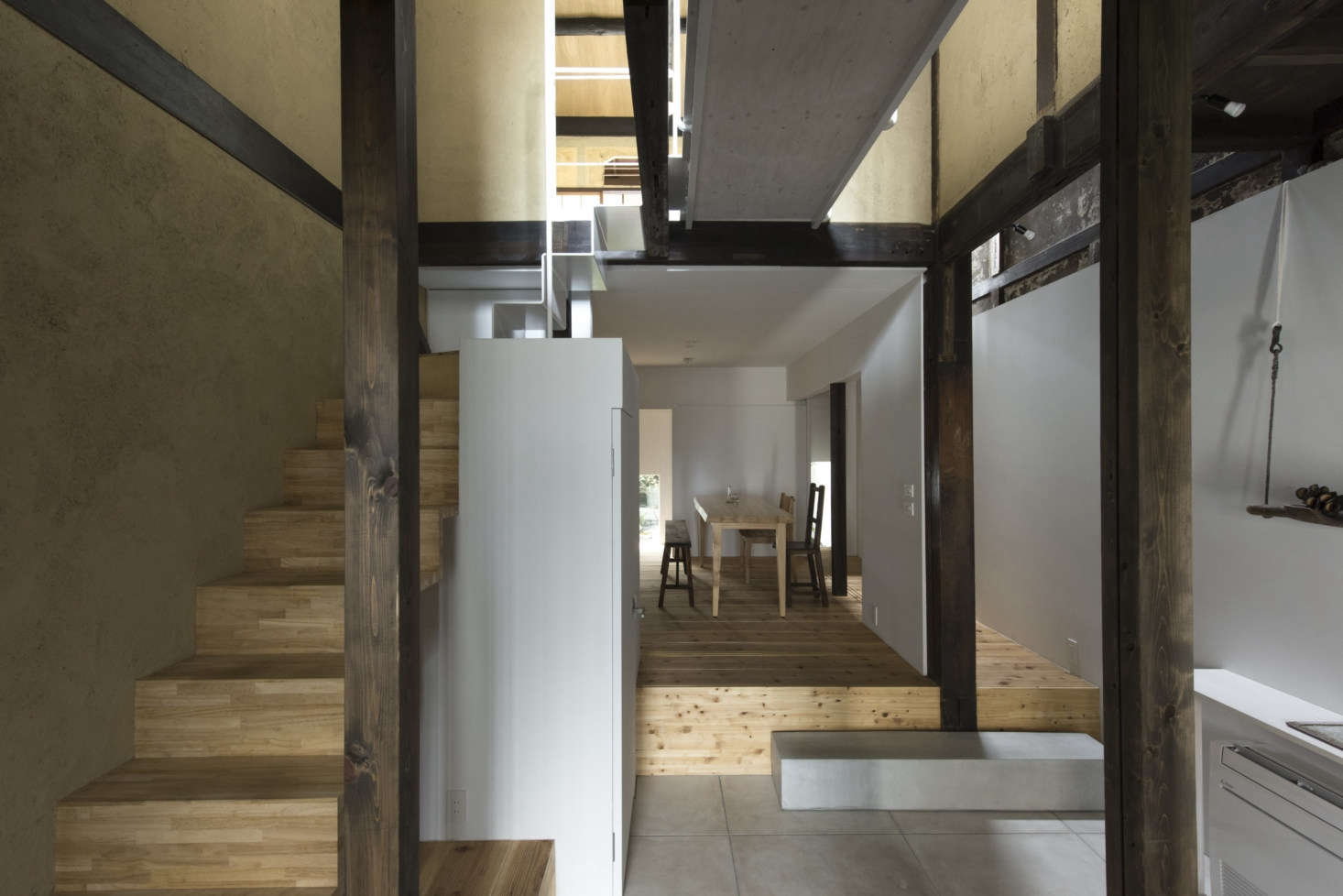 Above: “We tried to bring our own thoughts and lots of fresh ideas to a traditional machiya,” Anne told us. Guests rent the house, which has a courtyard garden and sleeps six. Be prepared for steep stairs.
Above: “We tried to bring our own thoughts and lots of fresh ideas to a traditional machiya,” Anne told us. Guests rent the house, which has a courtyard garden and sleeps six. Be prepared for steep stairs.
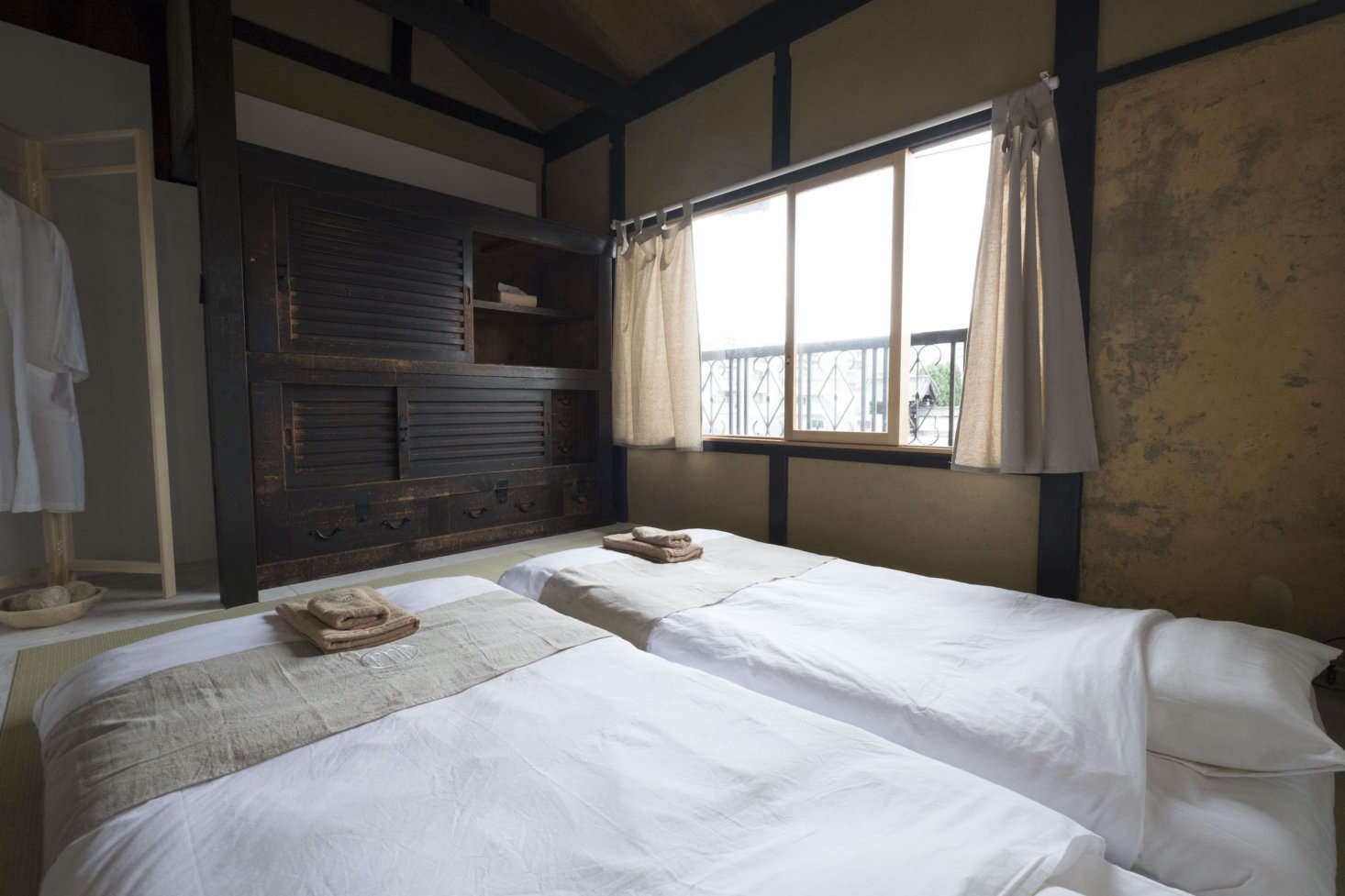 Above: Two of the three bedrooms have twin futons on tatami mats. Temperature Studio in Taiwan designed the robes and towels, which also appear in the Day in Khaki shop. Stay tuned: a second historic house is in the process of being renovated as a rental.
Above: Two of the three bedrooms have twin futons on tatami mats. Temperature Studio in Taiwan designed the robes and towels, which also appear in the Day in Khaki shop. Stay tuned: a second historic house is in the process of being renovated as a rental.
Kyomachiya Hotel
Kyomachiya Hotel is an enclave of 10 restored machiyas located in a tranquil residential area on the west side of Kyoto’s Imperial Palace. It has its own restaurant, gallery, garden, and spa, Shiki-Juraku, where guests check in and come for breakfast.
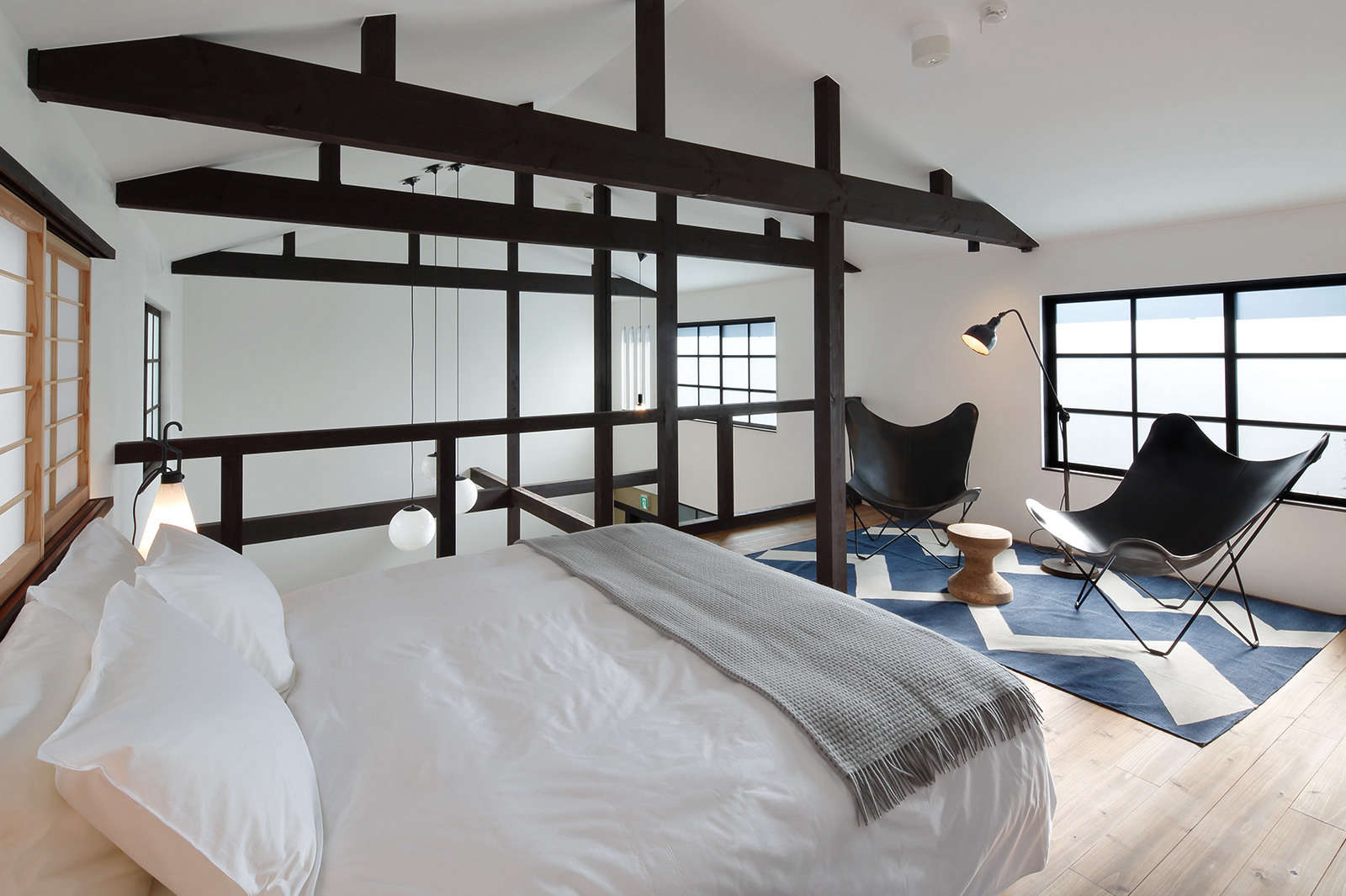 Above: The houses are rented individually. Go-Go (no. 5), which accommodates two, has a modern, double-height interior and a rarity in Japan: a king-size bed.
Above: The houses are rented individually. Go-Go (no. 5), which accommodates two, has a modern, double-height interior and a rarity in Japan: a king-size bed.
 Above: The No.5 bath with tiled shower and indoor-outdoor soaking tub.
Above: The No.5 bath with tiled shower and indoor-outdoor soaking tub.
Kyo no Ondokoro
Founded in Kyoto, the Wacoal corporation oversees a collection of six classic machiyas that different designers have remodeled as rentals. The reception desk for these Kyo no Ondokoro houses is at Wacoal headquarters.
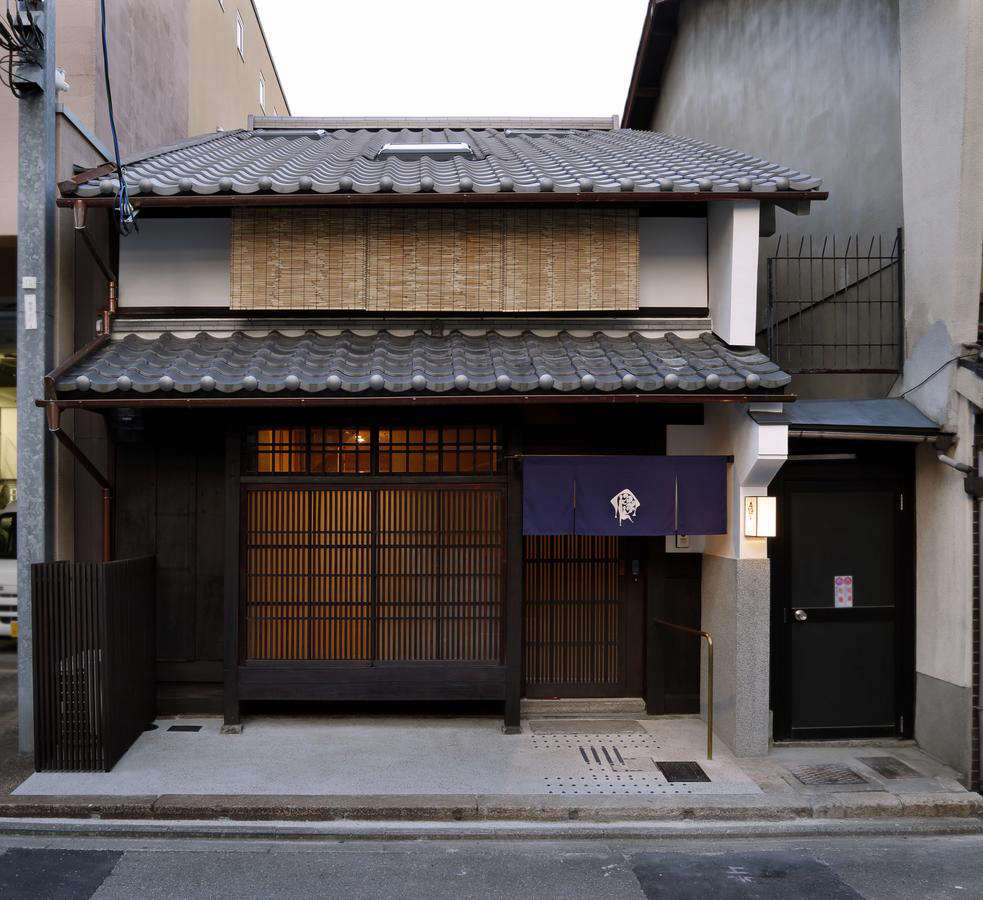 Above: Architect Yoshifumi Nakamura and designer Akira Minagawa, creator of the popular fashion and textile line Minä Perhonen, updated the 150-year-old Kamanza-Nijo house (#2), near Nijo Castle.
Above: Architect Yoshifumi Nakamura and designer Akira Minagawa, creator of the popular fashion and textile line Minä Perhonen, updated the 150-year-old Kamanza-Nijo house (#2), near Nijo Castle.
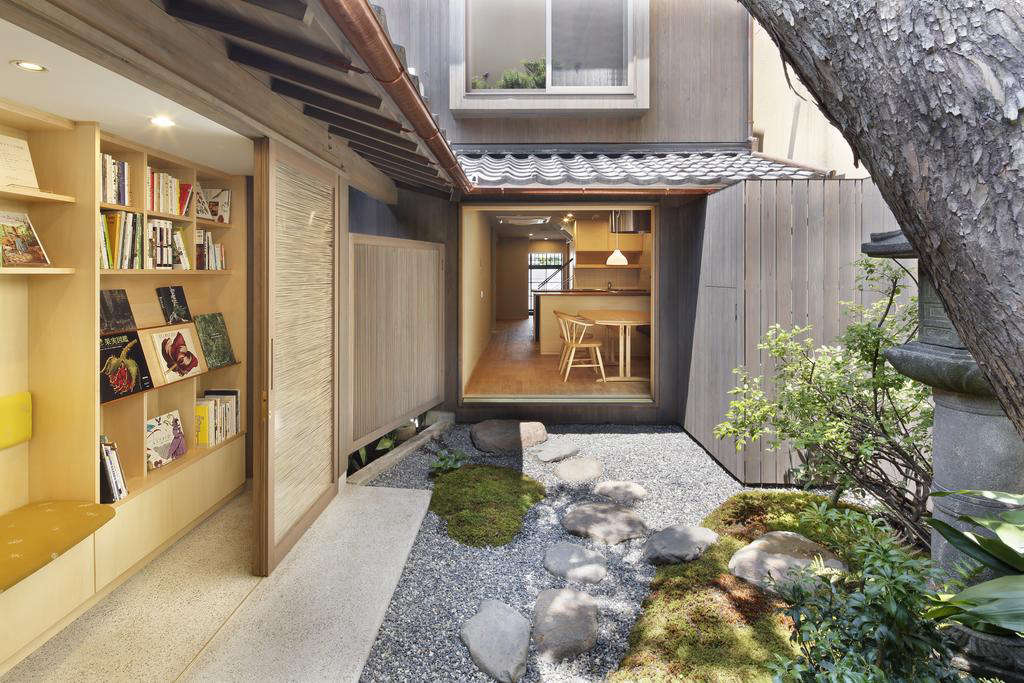 Above: The house was given a “garden library”anchored by a century-old inumaki tree.
Above: The house was given a “garden library”anchored by a century-old inumaki tree.
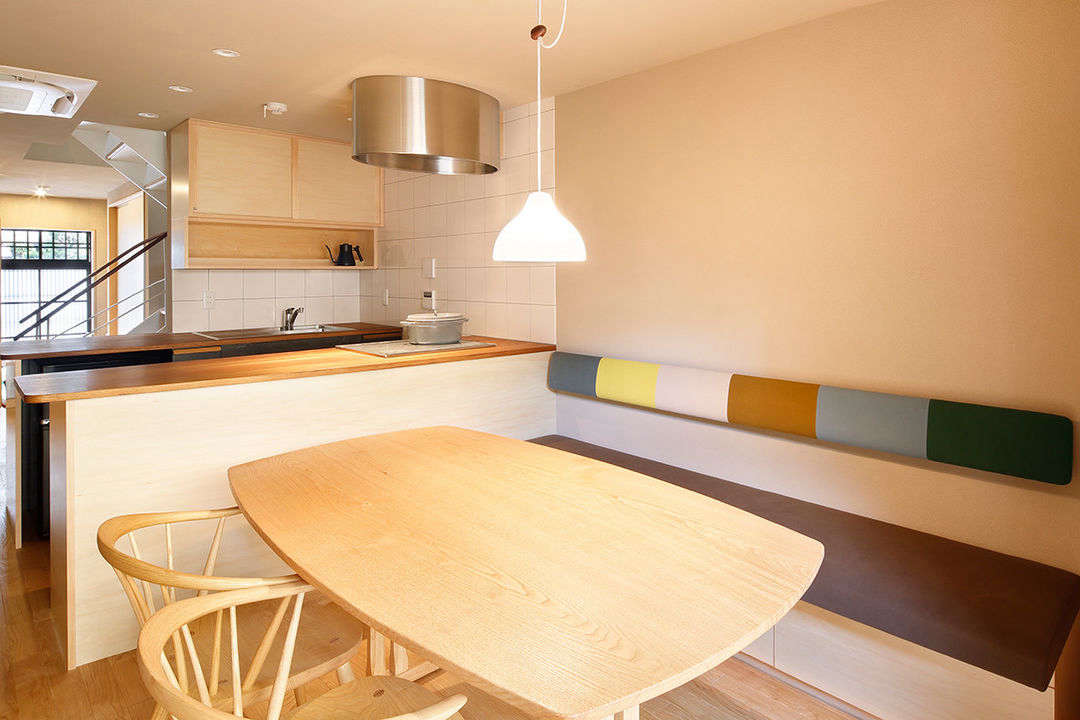 Above: The kitchen comes with a Minä Perhonen banquette. The house has two bedrooms—two single beds and two futons—and sleeps four.
Above: The kitchen comes with a Minä Perhonen banquette. The house has two bedrooms—two single beds and two futons—and sleeps four.
Kyoto Art Hostel Kumagusuku
We had no idea we’d have a two-story gallery to ourselves when we checked in at the Kyoto Art Hostel Kumagusuku. The artist-couple owners man the front desk, making sure everyone deposits footwear in canvas totes, and supplying drinks and an exceptional breakfast toast plate on request.
The hostel is located on a side street of small houses near the Sanjo-kai Shotengai, a 150-year-old shopping arcade filled with commuters whizzing through on bikes.
 Above: Just off the entry, there’s a charming compact kitchen facing an interior courtyard and gallery space. Watching breakfast being made is one of the highlights of staying here.
Above: Just off the entry, there’s a charming compact kitchen facing an interior courtyard and gallery space. Watching breakfast being made is one of the highlights of staying here.
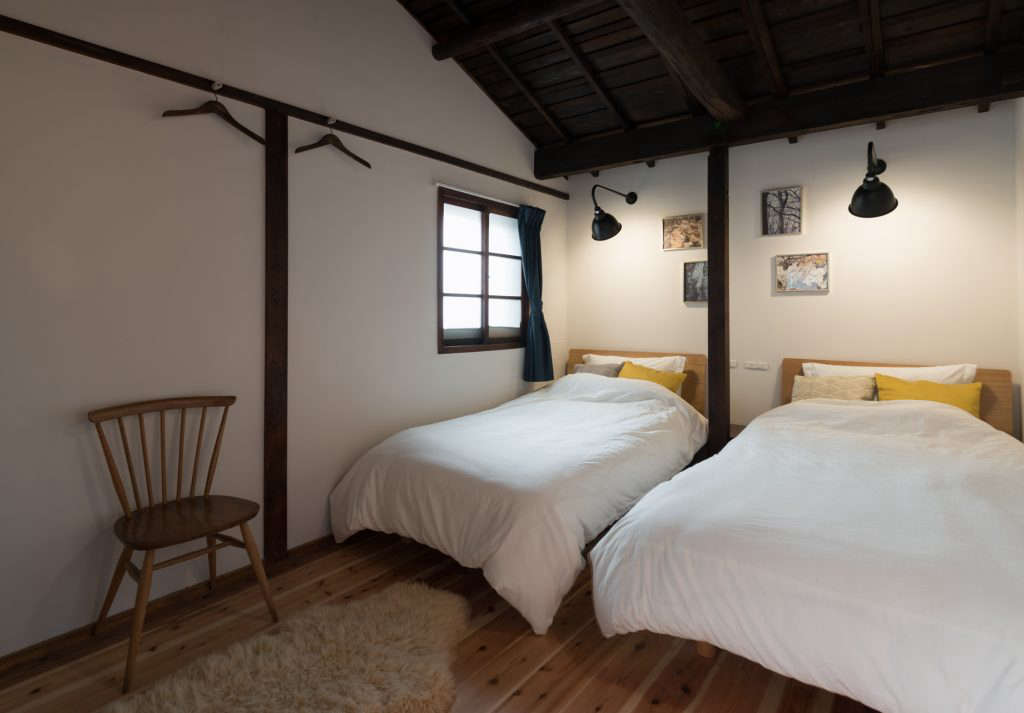 Above: Upstairs there are four cabin-like guest rooms set under the eaves that sometimes get put to use in art projects. Outside our room, a love seat faced a television continually playing an art video of objects being unwrapped.
Above: Upstairs there are four cabin-like guest rooms set under the eaves that sometimes get put to use in art projects. Outside our room, a love seat faced a television continually playing an art video of objects being unwrapped.
“We believe that art is not only for healing and beauty, but also for rethinking daily life,” write the owners. “Spending the night in such a space may be a bit away from the comfort and convenience that is inherently required of the inn. But sometimes there is an experience that overturns the values of the viewer and shakes the heart.” Hear, hear, but be warned: the nice but communal facilities are downstairs. The stair itself is short and ladder-like and guests are asked to don different slippers upstairs and down. It was a strange but magical place to stay. On return, I immediately copied the gallery and hung tin mugs on S hooks from a towel bar next to our bathroom sink.
RC Hotel
A midcentury concrete former apartment building, the RC has a bunker-chic look. It’s set in a quiet neighborhood of alleys, shrines, and temples 20 minutes from Kyoto Station, and offers city views from the top floor.
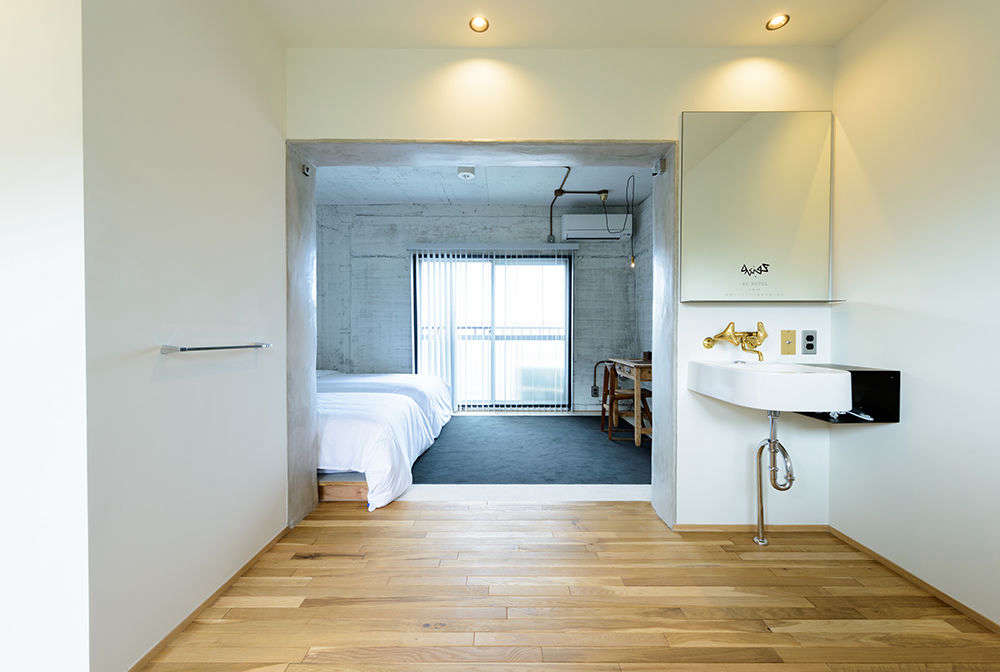 Above: An ensuite room with a writing desk at the RC Hotel.
Above: An ensuite room with a writing desk at the RC Hotel.
Honorable Mention: 9h pod hotels
There are a lot of well-priced, no-nonsense capsule options in Japan. My husband feared claustrophobia, but our kids and I convinced him we should give one a try. I had already been interested in 9h, and with Kano’s endorsement of the chain, I booked us four pods for a night in Osaka.
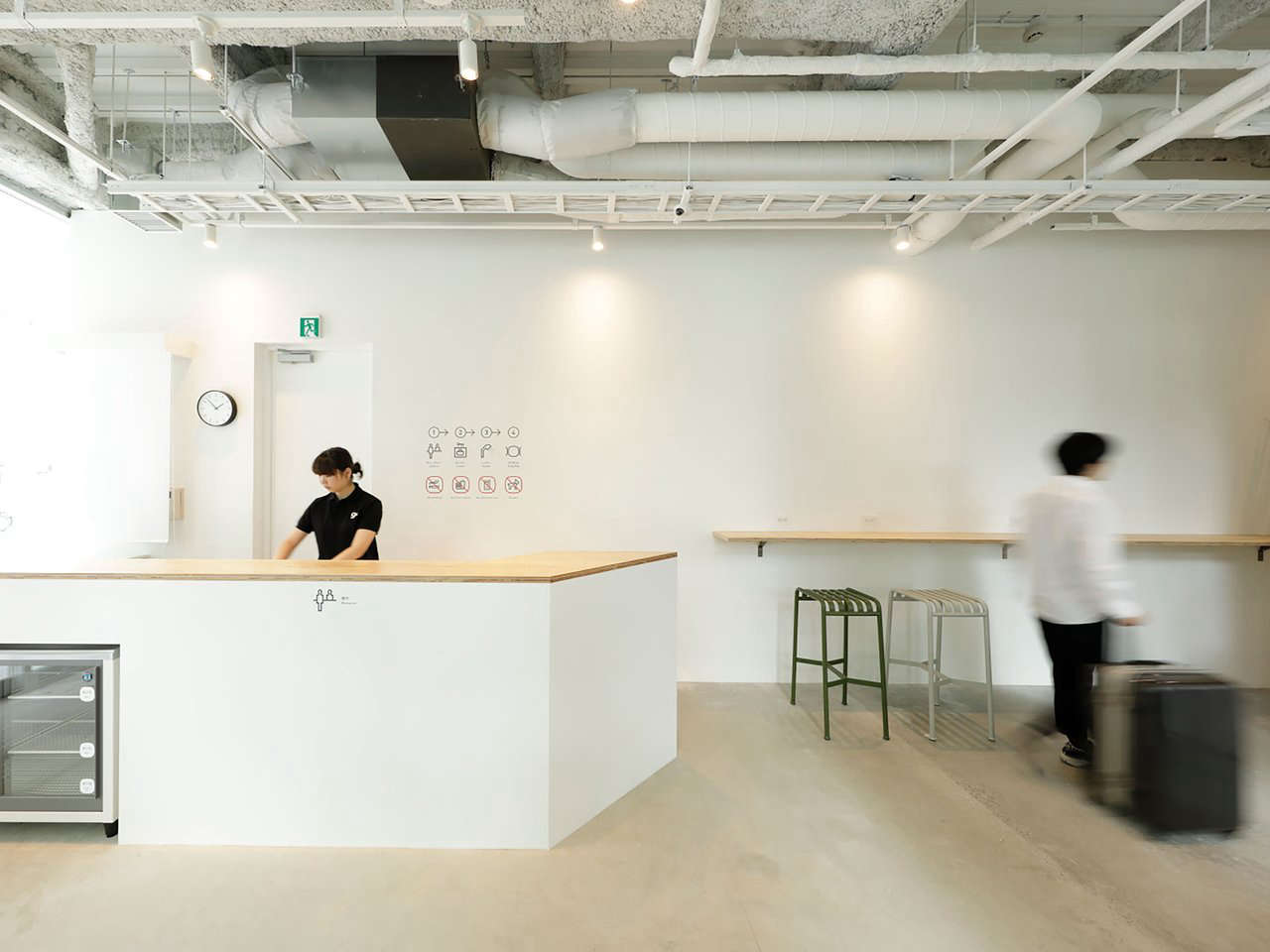 Above: Guests have 24 hours at the 9h. Caveat: If you want to stay more than a night, you have to pack up each morning and check back in later in the day. During the downtime, everything must get hosed down because all was spotless and even nice-looking.
Above: Guests have 24 hours at the 9h. Caveat: If you want to stay more than a night, you have to pack up each morning and check back in later in the day. During the downtime, everything must get hosed down because all was spotless and even nice-looking.
There are 16 locations throughout Japan, including at Narita Airport (so you can nap through your layover). Shown here is the 9h Osaka across from Shin-Osaka station. On arrival, we were each given a comfy black sleep suit (a light sweatshirt and sweatpants), slippers, and a key to a luggage locker. Men and women stay on separate floors—with separate elevators. There’s clever signage at every step. On the women’s floor, the luggage room was very tight, but we loved the washing-up area with individual sink vanities and white-tiled showers.
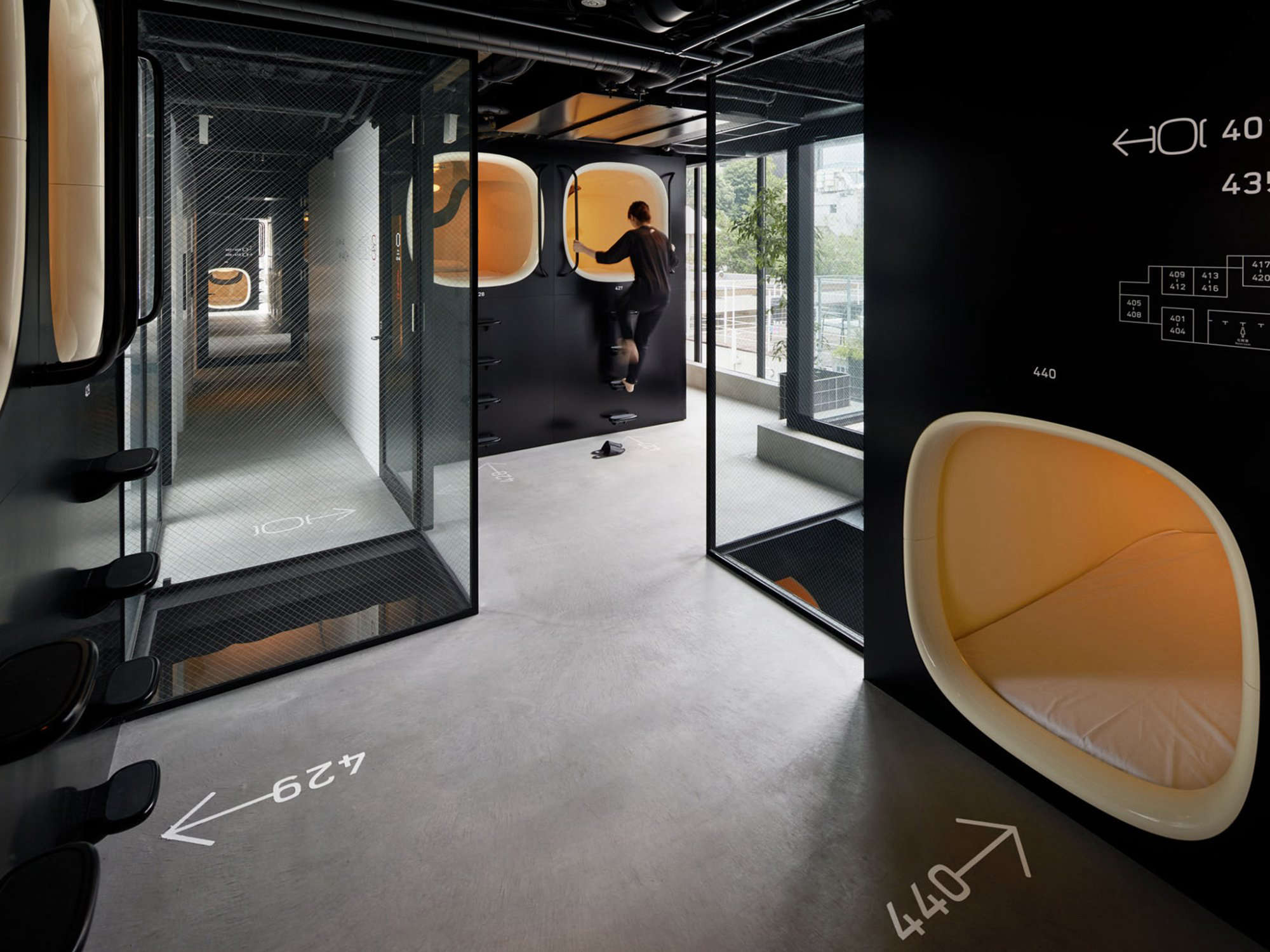 Above: You choose a high or low sleeping pod (with lights, outlets, and privacy curtains)—these are at the 9h Asakusa in Tokyo. Though just big enough for one, the berths to our surprise were enveloping rather than oppressive. As my son pointed out, “they feel like human charging stations.” We all slept exceptionally well, and the bill came to just $70.35 for the four of us. Every time I pop my wireless earbuds into their case, I think fondly of our pod night.
Above: You choose a high or low sleeping pod (with lights, outlets, and privacy curtains)—these are at the 9h Asakusa in Tokyo. Though just big enough for one, the berths to our surprise were enveloping rather than oppressive. As my son pointed out, “they feel like human charging stations.” We all slept exceptionally well, and the bill came to just $70.35 for the four of us. Every time I pop my wireless earbuds into their case, I think fondly of our pod night.
For more hotels (plus shop and restaurant recommendations), explore our Design Travel archive. Browse more of our Japan finds here.
You need to login or register to view and manage your bookmarks.
